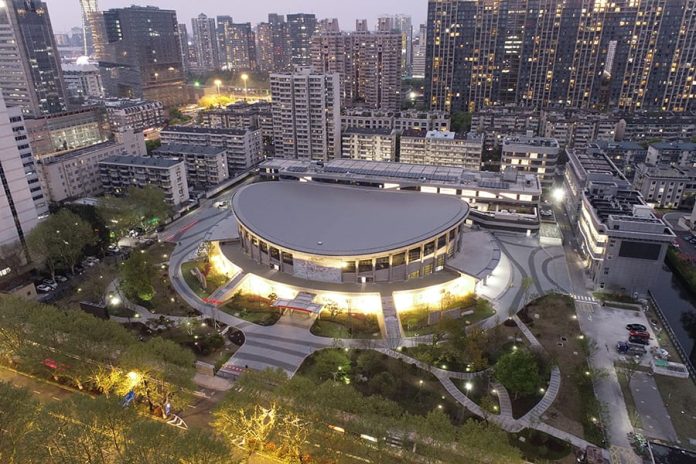The “Green Asian Games” is to integrate green, low-carbon, and sustainable concepts into the Asian Games, and strive to build the first carbon-neutral Asian Games and the first large-scale “waste-free” event, noted by Meng Xiangsheng, Deputy Director of Environmental Sustainability Department HAGOC, at the “Green Asian Games” themed press conference held in Hangzhou on September 26.
The “green” concept is implemented in the construction of the venues. Of the 54 venues in Hangzhou Asian Games, only 12 are newly built, and the rest are rebuilt or temporary venues, said Qiu Peihuang, Director of Venues Department HAGOC, at the conference.
The venues also make full use of clean energy and renewable resources. For example, the rainwater collected on the roof of Fuyang Water Sports Center is used as the atrium, fountain, and irrigation of the venue, which can save 35% of water per month and save about 1000 tons of water per day on average.
Besides, Hangzhou Olympic Sports Center gymnasium, swimming hall, and Lin’an Sports and Exhibition Center use light tube non-electric lighting system as daily lighting, saving up to 30% of annual lighting energy.
In terms of green energy, for the first time, all venues are supplied with solar or wind power, and the main torch tower is fueled by methanol rather than natural gas for the first time, as noted by Meng Xiangsheng.
The Asian Games venues can be sustained and efficient for national fitness use after the end of the game. For example, in the renovation project of Huanglong Sports Center, 13 national fitness programs such as basketball, tennis, and swimming have been integrated and opened, which can accommodate more than 6,000 people every day.


